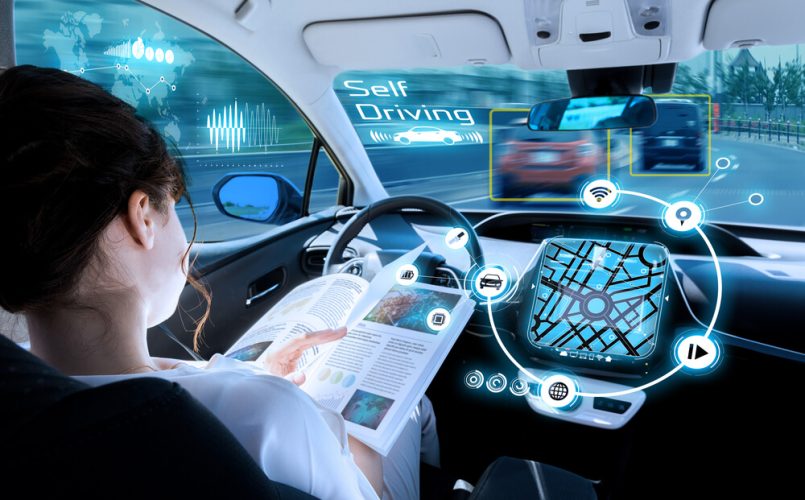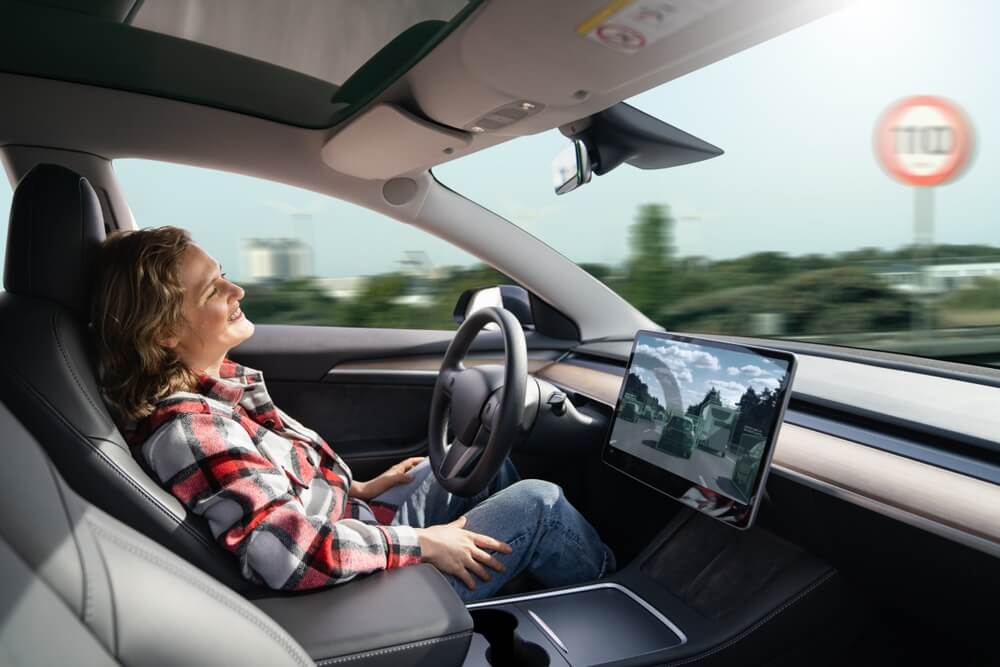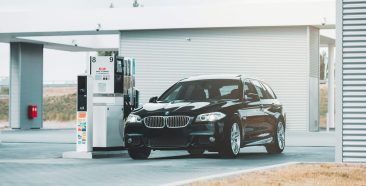
Future Insured: How Self-Driving Cars Will Affect Insurance
Over the past several years, auto manufacturers and technology companies have slowly but surely progressed on the journey to create functional, safe self-driving cars practical for everyday use. These businesses are now starting to test their autonomous vehicles on the road, drawing attention to one key question: “How will self-driving cars affect insurance?”
When you drive a traditional, non-autonomous car, you need to purchase auto insurance to protect your vehicle and reduce your financial liability if you cause an accident. But if a car doesn’t have a driver, who is actually liable? As self-driving cars become more common on the road, insurers are likely to rethink how their car insurance systems work. If you’re interested in the future of autonomous vehicles — or are simply curious about what would happen if you got into an accident with a self-driving vehicle — stay prepared by exploring some of the possibilities.
Steering Into the Future: The Arrival of Self-Driving Cars
Self-driving cars, also known as autonomous cars or robocars, have been in the works for decades. The idea is that driverless systems will be able to avoid common human issues, like not using proper lane and highway etiquette, speeding, and not checking blind spots. Governments, tech giants, and auto-makers have all invested countless dollars into making this vision of the future a reality. However, development has rapidly accelerated in the past few years. Just a few years ago, the idea of seeing driverless cars still seemed like a futuristic fantasy. But now, you can see an autonomous vehicle while you’re out on your daily commute.
From Sci-Fi to Highway: The Progress of Autonomous Vehicle Technology
Inventors have fantasized about automated vehicles ever since Leonardo Da Vinci designed a self-propelled cart in the 16th century. However, the development of autonomous vehicles started gaining more momentum in the mid-1900s. Scientists and engineers slowly started to develop the foundation for self-driving vehicles with technologies like cruise control and algorithms that could identify and respond to street signs.
In 1987, engineer Ernst Dickmanns outfitted a sedan with smart cameras and an imaging system that honed in on relevant visual information on the road. This technology allowed robocars to identify road hazards and respond to traffic changes successfully.
In 2015, the idea of autonomous vehicles hit the commercial market with Tesla’s “Autopilot” option for the Model X. Although “Autopilot” wasn’t completely self-sufficient, it was the first introduction of hands-free driving to the general public. Since then, companies like Mercedes and Honda have slowly introduced even more advanced automation features into their vehicles, shifting from simple driver assistance to genuine automation.
Although fully autonomous vehicles aren’t yet available to the average person, you can still find them on the roads in some cities. Self-driving car companies like Waymo are already rolling out driverless taxi services after years of extensive testing and real-time monitoring.
The Road Map to Full Automation: Understanding the 6 Levels of AV Capability
When it comes to self-driving cars, automation is a spectrum. The Society of Automotive Engineers developed a system for categorizing different levels of driving automation. The scale goes from zero to five, with zero indicating no autonomous driving capabilities and five indicating full autonomy with no need for driver involvement. Here are each of the levels:
- Level 0 — No Automation: A human driver needs to operate the vehicle on their own.
- Level 1 — Driver Assistance: The car can have automated steering, braking, or accelerating, but the systems aren’t connected.
- Level 2 — Partial Automation: The car can have an interconnected automated steering, braking, and accelerating system.
- Level 3 — Conditional Automation: The car has automated functions and can also make decisions on the road, such as reacting to traffic or weather.
- Level 4 — High Automation: The car can completely drive on its own, but it only drives on restricted approved paths.
- Level 5 — Full Automation: The car can drive on its own without any restrictions.
For levels 0-3, a driver needs to be behind the wheel, ready to take control if needed. Starting at level four, however, the driver should be able to trust in their car’s technology fully and won’t need to be alert on the road. Currently, level three automation is the most advanced option available on the market to regular drivers.
Buckle Up for Change: Insurance Industry on the Brink of Transformation
Now that autonomous vehicles are a reality on the road, you can expect incoming changes in the auto insurance industry. Although premiums are still calculated in the old-fashioned way, this potential change in liability is likely to have a big impact in the future.

The Impact of Self-Driving Vehicles on Current Auto Insurance Models
Insurers assess a wide variety of factors to calculate premium costs. This includes your driving history, the type of vehicle you drive, and demographic risk factors like your age and gender. Some states have no-fault systems, where your insurance covers your damages regardless of who caused the accident, while others have at-fault systems, where the liable driver’s policy pays for damages.
Currently, this system is still in place. If you have a car with self-driving features, you’ll still need personal insurance for your vehicle, just like any other car. You may even expect slightly higher rates because cars with self-driving features are often more advanced and expensive to repair. Exploring insurance rates by car can help you understand how what you choose to drive can affect your premium prices.
Self-Driving Cars and Insurance: Who Insures When There’s No Driver?
The insurance system becomes more complicated when fully autonomous cars are added to the mix. If you’re in a self-driving car and it makes a wrong move, are you liable for the algorithm’s mistake?
Many experts expect the insurance industry to start designing self-driving car insurance plans for autonomous vehicles that shift liability to the car’s manufacturers instead of the individual car owners. In the future, if you buy a fully autonomous car, you may not need to pay for car insurance at all. Auto and tech companies would instead assume responsibility for their algorithm and insure their vehicles directly, regardless of who owns and rides in them.
Driverless taxi companies are already using this concept to insure their vehicles. For example, Waymo, which has level four vehicles currently on the road, has fleet insurance for all Waymo vehicles. Instead of insuring individual people, the company treats the autonomous system as the driver.
Navigating New Policies: Insurance in the Age of Autonomy
At the moment, the development of autonomous vehicles seems to be outpacing both federal law and insurance policies. Currently, there’s limited legislation regarding liability and self-driving cars. Car insurance is regulated at a state level, but that can pose a challenge for companies like Tesla that operate throughout the country. If autonomous vehicle insurance is different from state to state, liability for self-driving vehicles could quickly become confusing. The federal government might soon step in to create more widespread guidance for the companies that produce autonomous vehicles.
Collision Coverage or Obsolete Concept? Exploring Insurance for AVs
As long as you’re still operating your car on the road, you’ll need collision coverage. Regardless of who causes a wreck, you’ll want financial help to pay for the repairs. Collision coverage pays for those repairs, even when you are at fault. If your vehicle is totaled, you’ll receive the actual cash value from your insurer.
Calculating Risk in an Era of Self-Driving Cars
Human error is the main cause of accidents on the road, and self-driving cars aim to eliminate this issue entirely. Driverless cars are equipped with advanced safety features and are programmed to react appropriately to avoid potential collisions. However, tech tools can still be flawed. Many algorithms are still learning about traffic patterns and how human drivers react to certain situations. Until insurance companies catch up with autonomous car development and start releasing driverless car insurance, it’s critical for you to protect yourself with a good policy.
Fatal Assumptions: Addressing Safety and Liability in AV Accidents
Safety is one of the most nerve-wracking issues in the world of automatic cars. Autonomous vehicles are being tested on the road, and pedestrians or other human drivers could potentially be injured or killed in a collision with a self-driving car. There isn’t a clear answer as to who would be liable in these situations, as there are several factors at play. Until the courts start sorting out these issues and establishing precedents for liability, anyone on the road should have adequate insurance to limit their liability.
Still Driving Your Own Car? Get Affordable Coverage Today
Widespread adoption of self-driving cars may be on the horizon, but it isn’t quite here yet. Until then, our team at Freeway is here to set you up with a reliable auto policy. Whether you’re driving a fully manual vehicle or have a new Tesla with advanced driver assistance, we have plans for you. Give us a call at 800-777-5620, visit your neighborhood Freeway Insurance office in person, or get a quote online to take care of your auto policy needs today.



